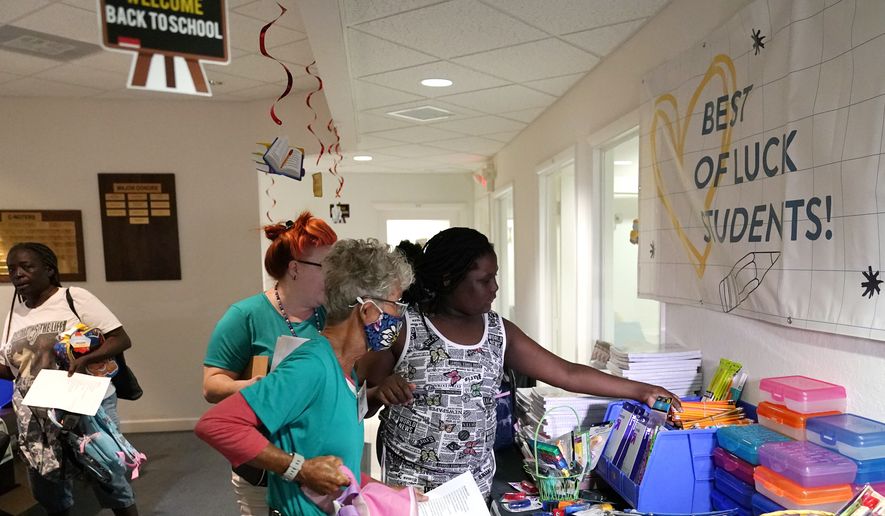Carolyn Foley, a 37-year-old single mother in Tennessee, says she’s never struggled more to cover back-to-school expenses than she has right now.
“Prices have gotten higher, and there’s less money to go around,” Ms. Foley, an executive chef, told The Washington Times. “It’s hard to even keep gas in my SUV. My son has grown a lot over the summer, and we need new clothes every two months, so we’re buying repurposed clothes at the thrift store to avoid buying anything new.”
Ms. Foley is spending more than $300 on clothing, supplies, a backpack and an iPad case for her 10-year-old son’s school device as he prepares for the first day of class at Red Bank Elementary School in Chattanooga. That’s $200 more than last year.
She’s among the thousands of parents struggling with higher prices for books, supplies and clothing as inflation forces them to spend more for less just weeks before class starts.
The National Retail Federation estimates that U.S. households will spend an average of $864 apiece this year, about $15 more than last year, as back-to-school spending matches last year’s record of $37 billion.
With inflation at a four-decade high of 9.1%, a Morning Consult poll found in May and June that the share of consumers expecting to shell out more than $500 on school-related purchases rose to 25% from 7% last year.
Economist Rachel Greszler, a senior research fellow at the Heritage Foundation, says inflation has made the average worker $3,400 poorer this month than in January 2021.
“While some households will be able to simply pay a lot more back, lower- and middle-income families that face tighter budgets and have less in savings will have to forgo some school supplies and new clothes, or else cut other items out of their family budget,” Ms. Greszler said.
According to the most recent data from the Bureau of Labor Statistics, the average cost of educational books and supplies rose year-over-year by 2.86% from June 2021 to last month. The average cost of clothing was up 5.4% during the same time.
“Inflation has risen more over the past year than nominal wages on average, so Americans are poorer in real terms than a year ago,” said Dan Sutter, an economist who teaches at Troy University in Alabama. “They cannot purchase everything they could afford a year ago.”
Helping to offset the cost of back-to-school expenses, more than a dozen states are offering back-to-school sales tax holidays. Last month, Florida extended its sales tax holiday to two weeks, running from July 25 to Aug. 7.
But those tax holidays won’t make a difference for some parents.
Isabella Stevenson, a 52-year-old mom in Virginia, says she plans to start a business to help offset her children’s costs this year. After emigrating from Vietnam in 1985, she’s not waiting on government officials to fix the problem.
Her family has spent $245 for generic notebooks, folders, pencils and paper at Target — items that cost them a little over $100 last year.
“I fled a communist regime because of this exact situation and I’m afraid it’s going to get worse,” said Ms. Stevenson, whose two daughters are starting grades 7 and 8 at The Basilica School of Saint Mary in Alexandria. “I don’t think Americans understand how bad it’s going to get.”
• Sean Salai can be reached at ssalai@washingtontimes.com.




Please read our comment policy before commenting.